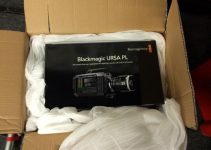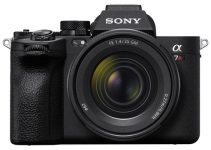It’s been a while now since the announcement of the Blackmagic Pocket 6K was made back in August 2019. It has been a sudden and absolutely unexpected surprise for most of us since the Pocket 4K had been announced just a few months prior. Understandably, there has been a lot of confusion ever since on which camera was the best choice. The difference and details can be subtle.
A quick glance on both spec sheets could lead you to overlook some important features missing on one camera or the other, while evaluation regarding price point needs to be made too. So, in order to get an expert opinion on the matter, we’re heading to Caleb Pike’s channel, aka the DSLR Video Shooter.
Caleb’s experience in camera reviews will highlight the crucial aspects of the two cameras and will help you in choosing the right one for your workflow. Let’s dive right in and get to the heart of the matter.
Apart from the obvious difference that’s right there in the name, one shoots 6K, the other one tops at 4K, there’s something more. Picking the 6K model will lock you to 6K Raw shooting, you won’t e able to shoot 4K Raw at all. But 6K is presumably the reason you chose the Pocket 6K.
If instead, you aim at shooting 4K mostly, you should consider the 6K again if your workflow involves ProRes. Why is that? Because if you switch to ProRes on the 6K you lose the higher resolutions as many pointed out, but you can still choose either getting a full sensor readout or a cropped 4K.
That means that you have effectively a 6K open-gate readout, downscaled to 4K. That makes for a much cleaner and crisper image.
The other elephant in the room (yes, the room is quite crowded at the moment) is the crop factor. Math will tell you that the 6K has a 1.558x crop factor, on the other side the 4K has a 1.9x crop factor. Does it matter? Well, quite a lot if you predominantly shoot wide angles.
As you can see in the straight comparison, the field of view (FOV) is quite smaller on the 4K. But is it a problem? Probably not. Even if we don’t consider the costlier Metabones Speed Booster 0.64x, there are plenty of options from different brands of adapters that can reduce the crop factor, even broadening the FOV so much that it exceeds the 6K.
So at the moment, the Pocket 4K is a better choice for the different possibilities you get. That is bound to change since speed boosters for the 6K version are on their way, but as for now, that’s how things are.
It’s worth noting that besides FOV if your work is audio-critical, you should be aware. The Pocket 6K has quite loud fans that will kick in to cool the sensor.
Nothing impossible to deal with, but you should be prepared. And while you are at it, stock a lot of LP-E6 batteries, since the 6K will chomp them like peanuts at a cocktail party.
So it’s all downsides? No, the Pocket 6K has its qualities, mostly due to the higher resolution, while the 4K model presents itself as a more budget-oriented camera, as it’s easy to notice.
Besides the 1K difference in price, the M4/3 mount allows for more lenses to be adapted, and even if you factor in the most expensive Speed Booster adaptors, you’re still well under the price point of the BMPCC 6K. So what’s your game? Resolution or budget? The final decision is up to you.
[source: DSLR Video Shooter]
Order Links:
Blackmagic Design Pocket Cinema Camera 4K (B&H, Amazon)
Blackmagic Design Pocket Cinema Camera 6K (B&H, Amazon)
Disclaimer: As an Amazon Associate partner and participant in B&H and Adorama Affiliate programmes, we earn a small comission from each purchase made through the affiliate links listed above at no additional cost to you.
Claim your copy of DAVINCI RESOLVE - SIMPLIFIED COURSE with 50% off! Get Instant Access!




